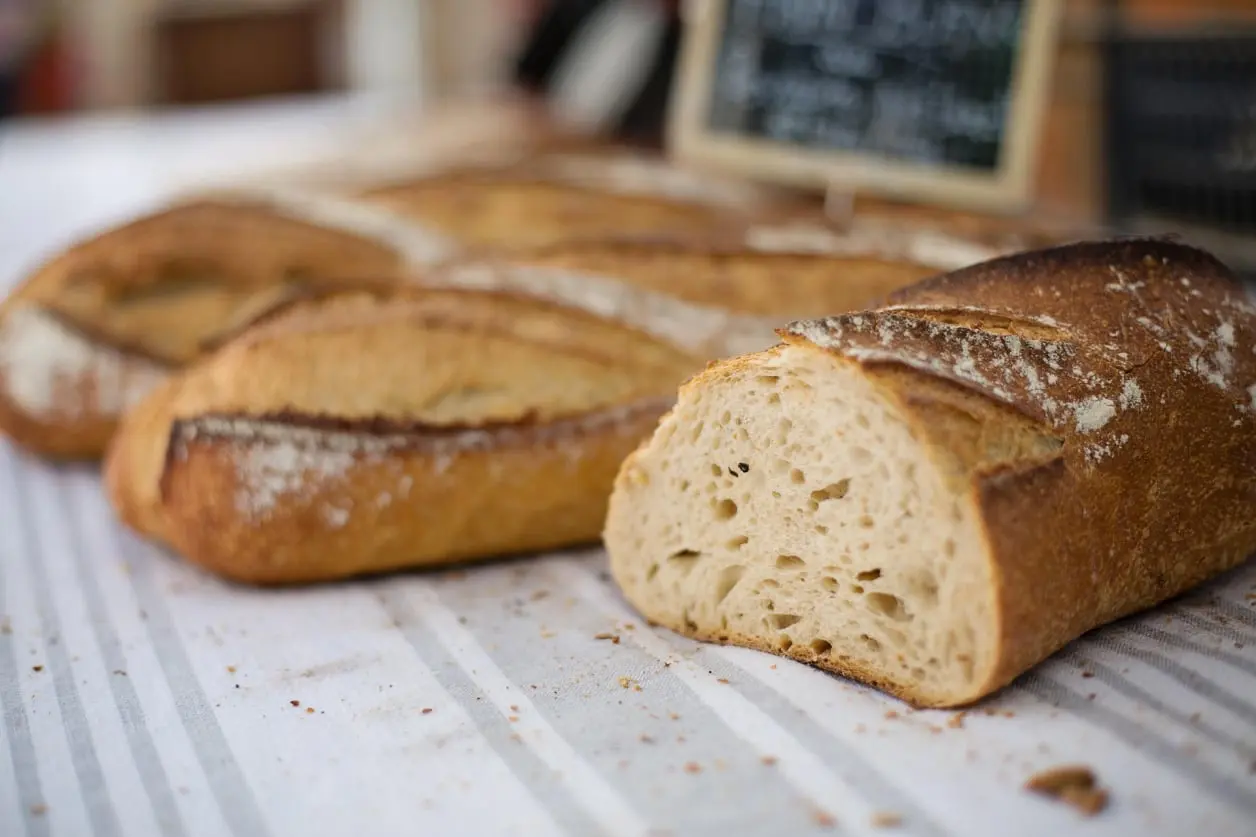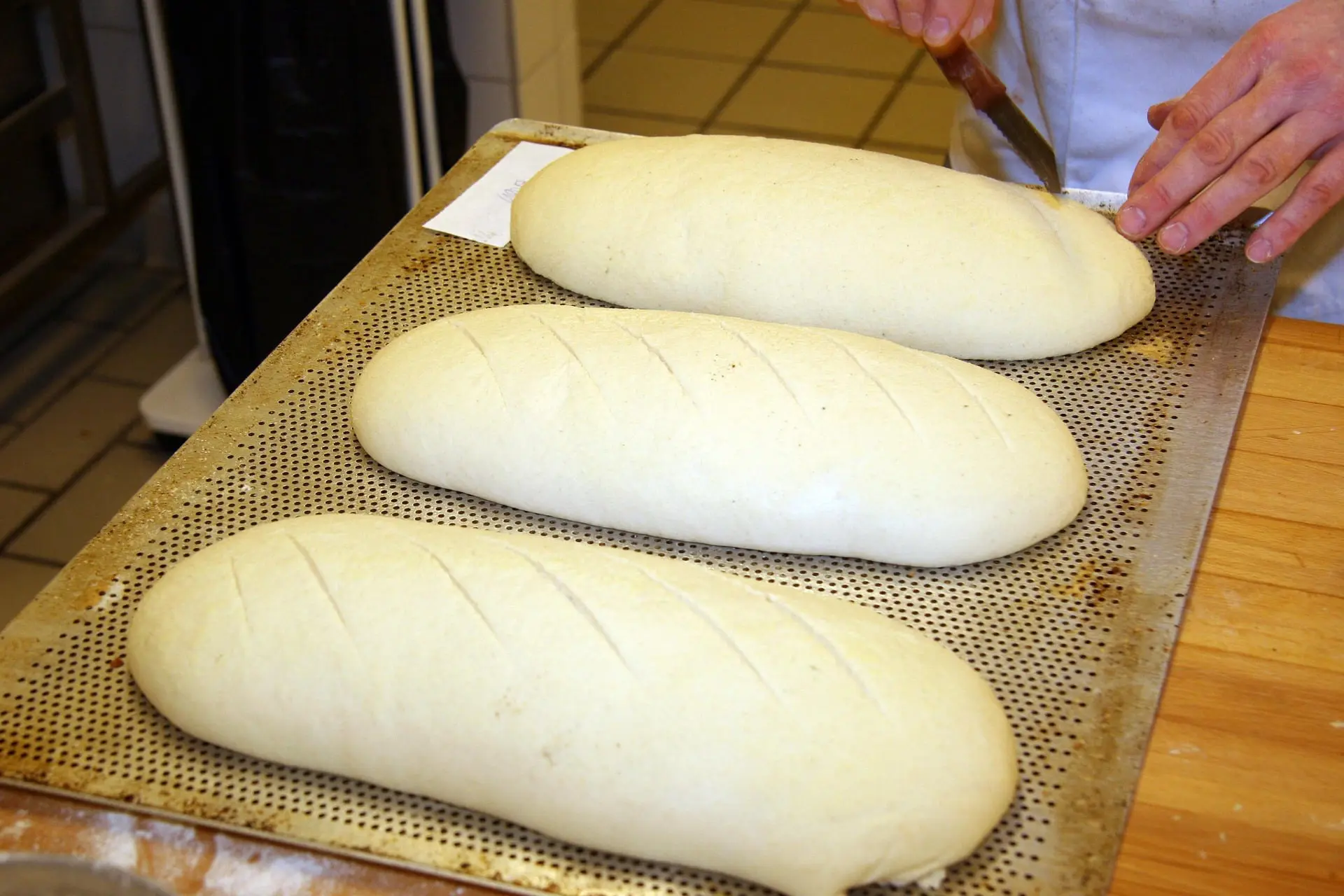
French Bread with Freshly Milled Flour
Ingredients for 2 loaves
Poolish:
1/8tsp yeast
65g warm water
60g Hard Red Wheat
Dough:
395g warm water
250g Hard Red Wheat
250g Hard White Wheat
10g Vital Wheat Gluten (optional)
1/2 tsp yeast
10g sea salt

Ingredients for 2 loaves
Poolish:
1/8tsp yeast
65g warm water
60g Hard Red Wheat
Dough:
395g warm water
250g Hard Red Wheat
250g Hard White Wheat
10g Vital Wheat Gluten (optional)
1/2 tsp yeast
10g sea salt
A poolish is a pre-ferment. It can be made with yeast or sourdough. To make a sourdough baguette, replace the yeast in your poolish with 60g sourdough starter and omit the yeast in the dough. Follow the steps as are, but keep in mind that you may need to extend the rising times. I recommend starting with yeast to get familiar with the steps as this is a more technical recipe.
Combine the water, wheat gluten and flour and autolyse for 30 minutes. Autolyse is simply mixing your flour with the wet ingredients and allowing it to rest for about 30 minutes to allow the flour to absorb the water and soften the bran and germ. You will also allow the gluten to form a bit more gently. DO NOT skip this step! The bran and germ are hard and will cut the gluten while you stretch and fold, preventing you from getting a properly developed gluten structure.
Add the yeast, salt and poolish. Combine into a shaggy dough and rest for 30 minutes.
Perform your first stretch and fold. Stretch and folds are a method of forming gluten structure in a high hydration dough. If you are familiar with sourdough, you may have used stretch and folds before. If not, it is a simple technique.
With a damp hand, quickly slip your fingers under one edge of the dough, lift the dough gently, wiggling if needed, to gently stretch the dough. Fold the dough back onto itself. Repeat on all four sides of the dough, rewetting your hand as needed to prevent sticking. Be careful to shake off the excess water after wetting your hand so you do not introduce too much water into the dough.
You may not be able to lift the dough very high during your first set of stretch and folds but with each repeated rest and stretch, the dough should become more smooth and stretch better. You want to be very gentle with the stretches to avoid popping any bubbles forming.
Rest for 1 hour and perform another stretch and fold.
Next we will perform more frequent sets every thirty minutes for 1-2 hours or until the dough has risen about 50%. Cover and refrigerate overnight or up to 24 hours.

Start by milling about a 1/4 cup of wheat and sifting the bran and germ out. Store the bran and germ in the freezer and save for another recipe like granola. We need the flour for dusting the surface but do not want the bran and germ cutting any of the gluten we have worked to form. Lightly dust the surface of your table with your sifted flour and gently turn the dough out, careful not to pop the bubbles.
Begin by separating the dough into three pieces. Pat and stretch each piece into a six inch square. Roll it gently into a cylinder using a bench scraper if needed for sticking. Cover with a towel and rest for 20 minutes seam side up.
With the seam side up, stretch the dough back into a rectangle. This time we do want to pop any large bubbles. Fold the bottom third of the dough up, leaving the top third open. now fold the top down and over forming a letter fold. Next we are going to fold the top of the dough down in half, gently pinching the dough together.
Next, we will VERY gently roll the folded dough like a log, into a long 12-15 inch snake, tapering the ends. Do not press hard on the dough, allow the gentle rolling motion to do all the work.
Heavily dust a linen towel with rice or semolina flour. Place one of your loaves in the center of the towel, using a thin board or pizza peel to gently roll the dough onto, and transfer. We want to be extremely gently with handling the dough. Place it seem side up. Pleat the edge of the fabric up, creating a wall. Place the next loaf up against this wall. Cover and rest for 30- 60 minutes. The loaves should rise about 50% and spring back slowly leaving an indent behind.
While the loaves rest for the final time, preheat your oven and steel to 500 degrees. If you do not have a baking steel, place a large, heavy baking sheet upside-down on your oven rack. In the rack below, place a cast iron pan. DO NOT use glass, it will shatter when you add your boiling water! Get some water boiling in a kettle towards the end of your rise time.
When it is time to bake, one at a time, roll the loaves onto your peel or board so the seam side is down. Score deeply at a 30 degree angle, three or four times moving quickly to cut rather then tear the dough. Alternatively you can make one long score down the center. Slide the loaves onto your baking steel in the oven.
Pour your boiling water into the cast iron pan below and mist the loaves with water. Shut the door quickly to keep the steam in. If you have a gas oven, the steam may vent out too quickly. You can try using a large roaster or lid that can cover the loaves after misting them. Make sure it can stand temperatures up to 500 degrees. Bake for 10 minutes then open the door to release the steam. Uncover if you used a lid, reduce the heat to 450 degrees and bake for 15-20 more minutes or until the center reads 200 degrees with a probe thermometer. Remove using tongs and cool completely on a wire rack.
Drag & Drop Website Builder